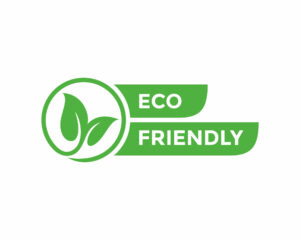Eco-Friendly Offers: Why Sustainable Deals Are the Future of Consumer Marketing
Eco-Friendly Offers: Why Sustainable Deals Are the Future of Consumer Marketing
Blog Article
As environmental awareness keeps growing among consumers, brands are increasingly aligning their marketing strategies with sustainability. Enter the rise of eco offer — special promotions, discounts, and product bundles that highlight environmental responsibility.
But these are more than just good marketing tactics. They reflect a powerful shift in consumer values, helping businesses meet demand while promoting a greener planet.
What Are Eco-Friendly Offers?
Eco-friendly offers are marketing promotions that encourage the acquiring sustainable products or support environmentally conscious behavior. These offers normally include:
Discounts on eco-friendly products
Buy-one-plant-one-tree campaigns
Reusable product bundles (e.g., water bottles, tote bags)
Rewards for recycling or reusing packaging
Subscription discounts for low-waste products
They try and appeal to environment concerned shoppers who wish their purchasing chance to make a positive impact.
Why Eco-Friendly Offers Matter
Consumers Want Sustainability
According to Nielsen as well as other research, a lot more than 70% of shoppers are willing to pay more for sustainable brands. Eco-offers give people a clear reason to buy — without compromising their values.
Brand Loyalty & Trust
Sustainable marketing builds long-term loyalty. Shoppers will return to brands that reflect their personal ethics.
Differentiation in a Crowded Market
With many industries saturated, sustainability provides a unique selling point. It's not just about price — it’s about purpose.
Supports CSR Goals
Eco-friendly offers often align with corporate social responsibility (CSR) and ESG (environmental, social, and governance) initiatives.
Types of Eco-Friendly Offers
Here are a couple of examples businesses can adopt:
???? Green Discounts
Offer discounts on eco-certified or organic products, like “20% off all biodegradable cleaning supplies.”
♻️ Trade-In Incentives
Encourage customers to send back used items (like clothing or electronics) in substitution for discounts on a new one.
???? Carbon Offset Promotions
For every purchase, donate to carbon offset projects — like planting trees or funding alternative energy.
????️ Reusable Product Packs
Bundle reusable items (e.g., beeswax wraps, refill bottles) and offer a discount in promoting waste reduction.
???? Sustainable Delivery Perks
Provide free or discounted shipping for customers who select slower, lower-emission delivery methods.
???? Gift With Purchase
Include a free of charge eco-friendly item, like a seed packet, bamboo toothbrush, or reusable straw set.
How to Market Eco-Friendly Offers Effectively
Be Transparent: Clearly explain the environmental benefit of the offer. Avoid vague claims or greenwashing.
Use Certifications: Highlight verified labels like Fair Trade, USDA Organic, FSC, or Energy Star.
Tell a Story: Share what sort of product helps the globe or how your company supports sustainability efforts.
Leverage Social Proof: Encourage customers to talk about their eco-friendly purchases on social networking.
Make It Easy: The greener option should be the more convenient or cost-effective one anytime you can.
Real-World Examples
Patagonia: Runs trade-in programs where customers receive store credit for returning used gear.
Lush Cosmetics: Offers free products when customers return a group number of empty containers.
IKEA: Provides discounts during “Sustainable Living Weeks” to advertise low-energy or recycled materials.
Who Gives A Crap: Sells eco-friendly toilet paper with discounts stuck just using clean water charity donations.
Eco-friendly offers are a lot more than marketing gimmicks — they're a reflection of a brand’s persistence for sustainability. In a world where environmental concerns are surface of mind, these offers help businesses stand out, build trust, and drive sales in a very way that aligns with modern values.